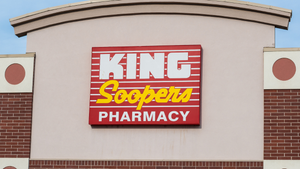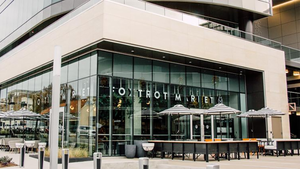RETAILERS EXPERIMENT WITH HAND SANITIZERSRETAILERS EXPERIMENT WITH HAND SANITIZERS
Hand soap or health and beauty care item? That is the question supermarket merchandisers are grappling with as they experiment with positioning the emerging hand sanitizer category.Two years ago, admid a blitz of medical reports about E. coli, flesh-eating bacteria, and outbreaks of diseases thought to be all but eradicated, the waterless hand sanitizer crossed over from the professional health care
May 4, 1998
RACHELLE NONES
Hand soap or health and beauty care item? That is the question supermarket merchandisers are grappling with as they experiment with positioning the emerging hand sanitizer category.
Two years ago, admid a blitz of medical reports about E. coli, flesh-eating bacteria, and outbreaks of diseases thought to be all but eradicated, the waterless hand sanitizer crossed over from the professional health care sector onto the mass-retailing scene.
Gojo Industries, a company in Cuyahoga Falls, Ohio, that is known for its professional skin care formulations, was the first to introduce an antibacterial cleanser for personal use under the Purell name. The manufacturer debuted the brand at the 1996 National Association of Chain Drug Stores' Marketplace Conference in San Diego.
Purell is a citrus-scented portable mixture of alcohol and emollients that is rubbed over the hands like a hand lotion. The product retails for $1.19 to $1.49 for a 2-ounce size, and $3 to $4.58 for 8 ounces.
The launch was so successful that in order to tap into additional consumer segments, Gojo quickly introduced two additional products -- Purell with Aloe and Purell Icy Blue Mint. Purell Kid's Own, hand sanitizers with kid-friendly names such as Berry Blast Hands, Magic Mint Hands, and Leapin'Lime Hands, were added to the line last year.
Since Purell's introduction, a slew of manufacturers have rolled out antibacterial hand sanitizers to wage war on germs. This has prompted retailers to ask where they should be merchandising the products.
A source at Eagle Food Centers, Milan, Ill., said Eagle is moving hand sanitizers from health and beauty care to the bar soap aisle because "we felt it was a better fit." Eagle has stocked the Purell brand for about a year and says "it is doing OK." The chain also carries Lysol's hand sanitizer, and it plans to expand the category with other brands.
Betsy Turgeon, HBC category manager at Big Y Supermarkets, Springfield, Mass., called consumer response to the Purell brand "respectable." Currently, the Original Purell adult formulation is outselling the Purell Kid's Own at Big Y. Turgeon feels, however, it's too early to compare the two categories because the Kid's Own line has only been in the store for four months.
Turgeon merchandises hand sanitizers by offering trial size versions and by placement in several sections of the store, including the bath/body and cough and cold sections. Although it is a little too early to tell, Turgeon believes that hand sanitizers could become a viable subsection and says that the product will be switched over from health and beauty aids to the bar soaps in the near future because "people think of it as a regular soap."
Jenny Rigg, a spokesperson for Colgate-Palmolive Co., New York, the manufacturer of Softsoap Antibacterial Hand Gel, reports that 70% of food stores are stocking antibacterial hand gels within the soap section, and they are using signage to call out product placement. "A number of chains also are providing secondary placement in the baby section among diaper-changing products," she said.
But many retailers are still experimenting with product placement, shifting the product from one department to another when necessary, in an effort to maximize exposure and create a niche. Meanwhile, manufacturers are working to increase consumer awareness through advertising, sampling and in-store demos.
As far as Colgate-Palmolive Co. is concerned, the customer has spoken in favor of these antiseptic hand cleaners. Riggs said, "sales of hand gels are taking off, as consumers have clearly indicated it is not a bother for them to carry a small 2-ounce or 4-ounce size in their purse, briefcase, backpack or glove compartment.
They're also using the larger pump sizes at places like diaper-changing tables, at cash registers and at office work stations, because hand gels are making it more convenient to kill germs."
She added that it is too early to tell how this business ultimately will be divided among the mass-market trade classes.
But early indications are that supermarkets can pick up the merchandising pace. During a four-week period ending March 31, 1998, Information Resources Inc., Chicago, tracked sales of Purell among mass-market retailers. Drug stores captured 41% of sales, mass held 37% of the dollars and food came away with 22%, according to Todd Tatham, director of marketing for Purell. He declined to give any dollar figures.
You May Also Like




